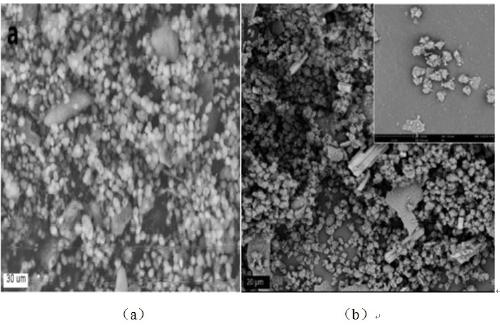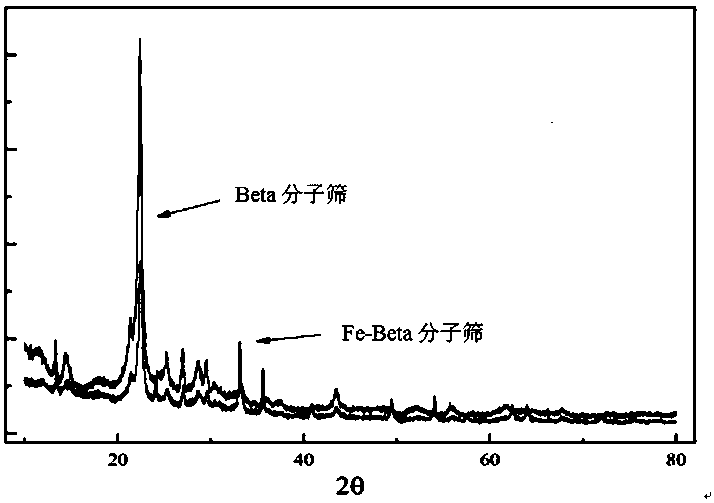A method for treating dye wastewater with a heterogeneous Fenton-like catalyst based on fe-beta molecular sieves
A fe-beta, dye wastewater technology, applied in the field of environmental engineering, can solve the problems of secondary pollution and low utilization rate, and achieve the effect of not easy to corrode equipment and good treatment effect
- Summary
- Abstract
- Description
- Claims
- Application Information
AI Technical Summary
Problems solved by technology
Method used
Image
Examples
Embodiment 1
[0024] Catalyst preparation: Mix Beta molecular sieves with concentrated nitric acid at a mass ratio of 1:50, at a temperature of 80 ° Stirring and dealumination at C for 20 h, centrifugation and washing 8 times, 105 ° C drying for 2 h, then 150 ° C drying for 10 h to obtain dealuminated Beta molecular sieves. Mix 1 g dealuminated Beta molecular sieve with 621.43 mg ferrous acetate (containing 200 mg Fe), grind for 15 min, and ° C, Roasting in air atmosphere for 6 h, Fe-Beta molecular sieve can be obtained.
[0025] Catalyst treatment of dye wastewater: Take 100 mL of rhodamine B solution with a concentration of 100 mg / L in a conical flask, add 30 mg of Fe-Beta molecular sieve catalyst, adjust the pH of the solution to 3.0 with 1 mol / L HCl solution, Placed on a shaker with a rotation speed of 150r / min and oscillated for 30 min in the dark to achieve adsorption equilibrium. later at 70 ° Mix the dye solution, Fe-Beta molecular sieves, and 0.4 mL of H at C 2 o 2 The solut...
Embodiment 2
[0027] The difference between this example and Example 1 is that the amount of ferrous acetate used in the preparation of the catalyst is 310.71 mg (containing 100 mg Fe), and other steps, parameters and operations are the same as in Example 1. The decolorization rate of rhodamine B under this embodiment is 18.8%.
Embodiment 3
[0029] The difference between this example and Example 1 is that the amount of ferrous acetate used in the preparation of the catalyst is 1242.86 mg (including 400 mg Fe), and other steps, parameters and operations are the same as in Example 1. The decolorization rate of rhodamine B under this embodiment is 30.1%.
PUM
| Property | Measurement | Unit |
|---|---|---|
| decolorization rate | aaaaa | aaaaa |
| decolorization rate | aaaaa | aaaaa |
| decolorization rate | aaaaa | aaaaa |
Abstract
Description
Claims
Application Information
 Login to View More
Login to View More - R&D
- Intellectual Property
- Life Sciences
- Materials
- Tech Scout
- Unparalleled Data Quality
- Higher Quality Content
- 60% Fewer Hallucinations
Browse by: Latest US Patents, China's latest patents, Technical Efficacy Thesaurus, Application Domain, Technology Topic, Popular Technical Reports.
© 2025 PatSnap. All rights reserved.Legal|Privacy policy|Modern Slavery Act Transparency Statement|Sitemap|About US| Contact US: help@patsnap.com


